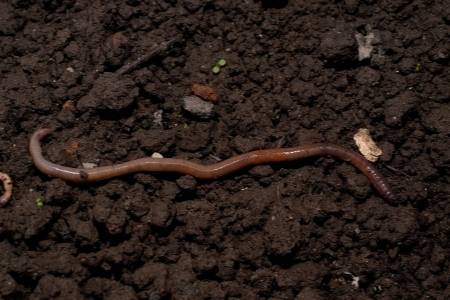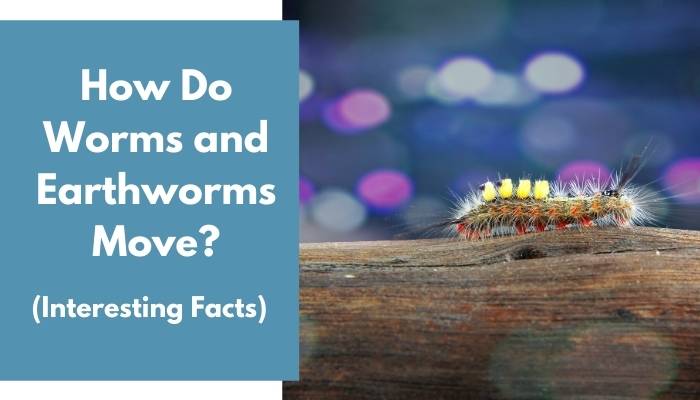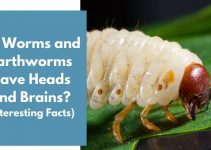If you have a curious mind, you may probably have wondered so much about worms. Indeed, these animals aren’t all cute and cuddly like our usual pets. However, they never run out of things to surprise us. For instance, it’s interesting to know something about them, in particular, their movement.
Thus, you may ask: how do worms and earthworms move? Worms and earthworms move using two kinds of muscles, which are circular and longitudinal. They also use tiny bristles that we call setae. This tool helps worms to get a grip of the soil and move around. They also have light and dark receptors to help them navigate.
Worms are quite fascinating in the sense that it’s fantastic to learn how they move around. Thus, in this article, you’ll get the answers your curious minds have always asked.
Let’s get into it!
Contents
How do earthworms and worms move?
As I said, an earthworm moves using two kinds of muscles, the circular and the longitudinal. Such muscles coordinate in movements so the worm can move in whatever direction it wants.
Aside from the muscles, worms also have tiny bristles known as setae. If there is a need to, worms can push the setae out of its body. Afterward, it gets a grip on the soil, enabling the worm to move forward.
In short, the worm uses its setae like an anchor. To move forward, the worm pushes the setae to support the front of its body. It would then contract the longitudinal muscles to shorten its body.
Aside from the movement using the muscles and the setae, earthworms also have light and dark receptors. Such receptors act as a guide for worms to remain underground and come back down if they reach the surface.
Related: How Do Worms and Earthworms Dig?
What helps the earthworm move?
Earthworms may not have legs and eyes to move. However, they compensate for it with some exciting tools. Below are the factors that contribute to the movement of an earthworm.
Muscles
As I said earlier, earthworms use two kinds of muscles to move. These are the circular and longitudinal muscles.
Whenever worms move, these two muscles move in a coordinated manner in any direction the earthworm would prefer.
Setae
The setae are the tiny bristles included in the earthworm’s body. It’s usually inside, but the earthworm would push it out if necessary.
It acts as an anchor to help the body move forward, gripping the soil for better and easier motion.
Light and dark receptors
The light and dark receptors are simply guides to indicate where they are. In general, the light receptor would tell the worm it’s near or on the surface.
The dark receptor would tell how deep the worm is from the surface. Worms need such receptors since they need to stay underground, or else they’ll get exposed to the sun and dry out.
Skin
Last but not least, the skin is also a guide for the worm’s movement. It senses vibrations, motions, and humidity. Thus, it allows worms to know if there are animals or if the area is moist enough to crawl.

Do worms and earthworms crawl or slither?
Earthworms or worms don’t slither or crawl. Instead, they wriggle. They pull themselves along by tightening up the circular muscles.
Whenever they do, they make themselves longer, enabling them to move forward. Worms would then squeeze up the longitudinal muscles to pull their rear up to the front.
If it gets complicated, the worm will pull out the setae to anchor and grip the soil for more effortless movement.
Worms navigate through a different way than us. Since they don’t have eyes, they use other things as their navigation tool.
Among these are the light and dark receptors. Such receptors make them identify light and sets it as an alarm not to go to the surface for too long.
Aside from the receptors, they use their skin to monitor other data such as heat, moisture, and touch.
For this reason, worms can navigate with ease, even without the ability to see.
How do worms still move when cut?
Worms consist of several segments to help their bodies move. Thus, even if they get cut in half, one of the parts can still manage to survive and move around.
The worms have a part called the ‘saddle,’ which is usually in the middle. If they get cut, the feature where the saddle is would likely survive.
The other part would wriggle due to the nerve endings. It would take a while before the nerve endings would stop.
It also rejects the belief of many that cutting worms in half would create two more worms.
Summary
Worms are exciting animals, and they can surprise us with fascinating facts. One of these is how they move around and navigate.
With their bodies, it can be a real wonder how they move. Worms don’t have eyes, legs, or even bones, yet they do well to thrive, and it’s all because they have exciting tools.
Worms may not have the organs we have to move. However, they compensate for many things. They may not be able to see, but they can sense light.
Worms may not have legs, but it has muscles and setae that coordinate to move. Lastly, it also has the skin to determine possible vibrations of animals around.
Resources
Image credits – Canva



